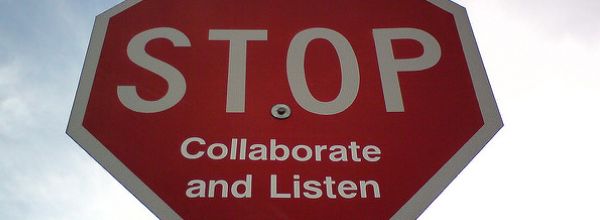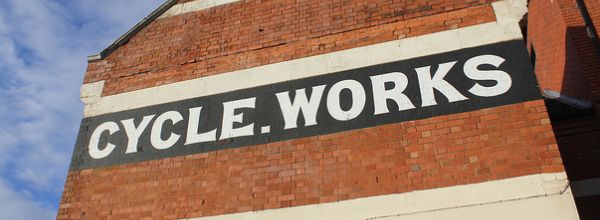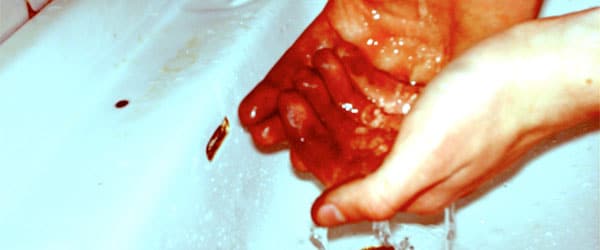Acids are common and essential chemicals in any research laboratory.
Doubtless, you use them to adjust the pH of your solutions, clean glassware and calibrate instruments.
But how do you handle and dispose of acids safely? What are the strongest acids you may need to handle during your research career?
In this article, we’ll answer those questions. By the end, you should be clued in on some specific strong acids and more confident with the routine handling of common acids.
We’ll cover some common acids and some exotic acids, too.
Safety Notice: How to Handle Strong Acids Safely
The chemicals discussed in this article are extremely dangerous. They will cause severe burns and are toxic by inhalation. There is also a risk of explosion if preparation procedures are performed in the incorrect order.
Before starting any work, please:
- Generate/read and sign risk assessments for all procedures.
- Generate/read and sign COSHH forms for all chemicals.
- Inform your safety officer if these procedures are new to your lab.
- If possible, have somebody demonstrate the process first.
- Perform all work in a functioning fume hood.
- Prepare only as much acid as you need.
- Wear butyl gloves, safety glasses, and a lab coat.
This article is not a risk assessment. Respect these chemicals and the safety of you and your colleagues.
Never:
- Lift anything up to your face to label it.
- Leave anything unlabelled.
- Carry out this work unsupervised the first time around.
Always:
- Place sticky labels near receptacles/on the fume hood.
- Dispose of waste safely and correctly (see later).
- Seek advice if you are unsure.
Incidentally, I try to keep my hands well above the apertures of my glassware and bottles so that I don’t accidentally pour acid on my hands or wrists. This means not holding measuring cylinders as you pour liquid into them.
This takes a steady pair of hands and another skill—pouring liquid from wide apertures into narrow ones without spilling a drop.
Do practice this at some point because it’s a valuable lab skill and life skill. For example, if you’re essentially bourgeois like me, you can pour a glass of wine back into the bottle.
Please do whatever feels comfortable for you, however.
Let’s get into it.
Hydrochloric Acid
Hydrochloric acid (HCl) is your ready-salted, happy shopper acid. You’ll use it for all sorts in the lab, including:
- Adjusting the pH of solutions and buffers.
- Regenerating cation exchange resins.
- Cleaning glassware.
Fortunately, you don’t need to prepare HCl in its most concentrated form, as you can buy it straight from your solvent store or online.
How to Prepare 5M HCl in the Lab
The most common reason you will need to handle HCl is when you prepare 5M HCl for your lab to adjust the pH of solutions. Let’s go through how to do this. Firstly, here are a few facts:
- HCl is sold at ~ 37%.
- This equates to ~ 12M.
- HCl at this concentration is called fuming HCl.
To prepare 5M HCl, the dilution ratio we need is 5/12 = 0.416.
So, we need 0.416 parts fuming HCl and 0.584 parts water to generate 5M HCl.
In simple lab-friendly terms, this means diluting 42 mL of fuming HCl into 58 mL of water to generate 100 mL of our final 5M HCl. Here’s a step-by-step on how to do this:
- Add 35 mL of deionized water to a Pyrex® beaker and get it stirring gently.
- Using a Pasteur pipette, slowly add 42 mL of fuming HCl.
- Allow fumes to clear before each addition, and don’t allow the water to boil.
- Bring the final volume to 100 mL with deionized water.
Simple.
How to Dispose of HCl Safely
Check your local rules first, but here’s what I do:
- Neutralize it with sodium carbonate or soda crystals.
- Or pour it down the sink with copious amounts of water.
And if you’ve dissolved something toxic in it, sign it out as corrosive waste. Think of the fishies.
Nitric Acid
Nitric acid (HNO3) is another aggressive acid that’s probably knocking around in your lab. It’s the one used to make bombs (TNT) and fertilizers (ammonium nitrate). Its laboratory uses include:
- Dissolving standards and samples for ICP-MS.
- Nitration of organic compounds.
- Cleaning glassware and ceramics.
Like HCl, you don’t need to mess around preparing nitric acid. It is available in several grades:
- 70% nitric acid. Concentrated or technical grade. Used for cleaning.
- 90% nitric acid. Yellow fuming grade. Used to manufacture fertilizer.
- 98% nitric acid. Fuming grade. Used to manufacture rocket fuel.
70 % nitric acid (or less) is what you will have in your lab. Thankfully, you don’t need to worry about the other grades.
How to Dispose of HNO3 Safely
See “How to Dispose of HCl Safely” above.
Aqua Regia
Let’s move into the more interesting, exotic, and dangerous stuff.
Aqua regia is Latin for royal water. It takes this name because it can dissolve precious metals such as gold and platinum.
It’s a 3:1 mixture of fuming (37%) HCl and concentrated (70%) nitric acid.
It has many uses, including:
- Cleaning metal-contaminated glassware.
- Cleaning other stubborn chemical contaminations.
- Cleaning crucibles for thermogravimetric analysis.
- Cleaning NMR tubes.
- Dissolving standards and samples for ICP-MS.
- Etching.
Its application as a cleaning agent is obviously related to its ability to dissolve stubborn, insoluble species.
For this reason, it’s a great help to know how to prepare aqua regia confidently and safely—especially if you hold a senior or technical position.
How to Prepare Aqua Regia in the Lab
A few things to note from the get-go include:
- Always use Pyrex receptacles. Aqua regia can dissolve some plastics.
- Never seal any receptacles containing aqua regia.
- Never store aqua regia. Prepare it fresh for every use.
- Have your final volume divisible by 4.
The reason for the final point is the 3:1 ratio.
You don’t need to be super accurate—the nearest milliliter or so will do.
So having a volume divisible by 4 cuts out unnecessary pipetting steps (which all add risk) and means you can just fill measuring cylinders up to the major denominations. Think 30 and 10 mL or 45 and 15 mL.
And here’s how I safely prepare aqua regia in the lab:
- Decant three parts fuming HCl into one measuring cylinder, and one part concentrated HNO3 into another measuring cylinder. Use two different-sized measuring cylinders to avoid mixing them up.
- Place a clean Pyrex beaker onto a heatproof mat in the fume cupboard. Pour the fuming HCl into the beaker.
- Slowly add the concentrated nitric acid to the fuming HCl. Never the other way around!
- Use aqua regia immediately as per your intended application.
Regarding points 1 and 3, this is because HCl and HNO3 react to form nitrosyl chloride (NOCl) and chlorine gas (and some water). The chlorine gas is liberated immediately upon mixing, and nitrosyl chloride breaks down into nitric oxide (NO) and chlorine gas.
All of these products are toxic.
If we dump hydrochloric acid onto the entire volume of nitric acid at once—all these nasty products are liberated immediately and potentially explosively.
If instead, we slowly add the nitric acid to the hydrochloric acid, the reaction proceeds gently. Excess heat is allowed to dissipate, and toxic gases evolve gradually.
The evolution of toxic gasses is also why we never store aqua regia and especially don’t prepare it in a sealed receptacle.
What happens when gasses build up in a sealed bottle? It explodes!
Explosions due to mishandling of aqua regia have happened.
Regarding point 4, this is because aqua regia loses its potency over time (although it’s still wildly acidic). After you prepare it, you’ll notice it turn yellow/orange.
It’s like the Devil’s Irn-Bru.
Aqua regia is yellow because dissolved chlorine gas and nitrosyl chloride are yellow. These gasses will escape over time. This is why aqua regia loses its potency (see disposal).
And if you use aqua regia to clean an object, handle it (the object) with a pair of tongues and rinse or submerge these in copious amounts of water afterward. Careful not to splash, too!
How to Dispose of Aqua Regia Safely
Never override any local rules at your institute, but here’s how I dispose of aqua regia in the lab:
- Leave overnight to allow nitrosyl chloride to break down completely.
- Neutralize it with sodium carbonate or soda crystals.
- Pour it down the sink with copious amounts of water.
If you’re in a rush or have prepared (say) more than 100 mL of it:
- Pour over a large quantity of ice.
- Neutralize it with sodium carbonate or soda crystals.
- Pour it down the sink with copious amounts of water.
The ice does two things. It dilutes the aqua regia as it melts and takes up the heat of dilution that is generated when aqua regia is diluted.
Leaving it overnight and allowing the nitrosyl chloride to break down is tantamount to converting it into HCl. You’ll notice it will have lost its yellow color.
Not exactly safe, but still an improvement.
And if you’ve used aqua regia to dissolve significant amounts of toxic chemicals (such as metals), neutralize it and sign it out as hazardous waste as per the rules of your institute.
Piranha Solution
A dreadful chemical should be named as such. It doesn’t benefit anybody referring to dangerous species by pompous names like “aqua regia.”
I’d wager reagents called something like “slow death solution” or “gurney granules” are more likely to be handled with more care than those with lofty names like “angelic acid.”
That said, FOOF and draculin are both legitimate chemical names. There’s also a signal protein called “noggin.” So, some people agree with me.
A literal name is the only good thing about piranha solution, however.
It’s a 3:1 mixture of concentrated (98%) sulfuric acid (H2SO4) and 30% w/v hydrogen peroxide (H2O2).
Thankfully, it isn’t as widely used as aqua regia. Its main uses include:
- Removing trace amounts of organic matter from glassware.
- Etching.
And when I say trace, I mean trace.
Piranha solution reacts violently with organic matter and will begin to boil upon contact with small amounts of it.
For that reason, clean all receptacles as thoroughly as possible and ensure they are completely dry before use. Piranha solution will spontaneously ignite paper and explode on contact with acetone.
And just to be clear on its dreadfulness. Piranha solution will dissolve bone.
How to Prepare Piranha Solution in the Lab
Hopefully, you never need to prepare piranha solution. If you do, here’s how to do it safely:
- Decant three parts concentrated sulfuric acid into one measuring cylinder and one part 30% w/v hydrogen peroxide into another measuring cylinder. Use two different-sized measuring cylinders to avoid mixing them up.
- Place a clean Pyrex beaker onto a heatproof mat in the fume cupboard. Pour the concentrated sulfuric acid into the beaker.
- Slowly add the hydrogen peroxide to the concentrated sulfuric acid. Never the other way around!
- Allow the piranha solution to cool for approximately half an hour.
- Use as per intended application.
I laid on the safety procedures of preparing aqua regia to keep you safe and avoid repetition.
All the safety information regarding preparation, handing, and disposal of aqua regia applies to piranha solution.
While the chemicals are different, it still spontaneously evolves gas, will lose potency over time, and can explode if the sulfuric acid is added to the hydrogen peroxide.
Some things you might want to do differently include:
- Wear thick rubber gloves with extended cuffs.
- Wear a face shield.
- Neutralize any spillages before wiping them up.
The thicker gloves offer more protection than thin nitrile gloves, which are extremely prone to ripping.
If you try to wipe up spilled piranha solution before neutralizing it, it will turn the tissue into cinders. Hopefully, you never spill it. But if you do, add a ~ 5-fold excess of ice on top of the spillage and then neutralize it with sodium hydroxide.
Given how niche a chemical it is, it’s doubtful you’ll ever have to prepare it. Phew!
How to Dispose of Piranha Solution Safely
If you do have to prepare, here’s how to get rid of it safely.
- Leave overnight to react fully.
- Dilute to less than 10 % in water.
- Neutralize it with sodium carbonate or soda crystals, etc.
- Small volumes (50-100 mL) can be washed down the sink.
- Large volumes should be collected as hazardous waste.
Note: if step 5 is necessary, add a small amount of the piranha solution to the waste container and inspect for any reaction. If there is no reaction, continue to pour the remaining dilute piranha solution carefully. Ideally, use a container with a vented cap.
Titanium Tetrachloride
Okay. This one’s just for a bit of fun because the rest of this article has been kind of scary.
Titanium tetrachloride (TiCl4) is a strong Lewis acid, also known as tickle—although it will do a bit more than that if you spill it on yourself.
Oh, and can you spot why it’s called tickle?
Anyway, its primary uses include:
- Producing titanium metal.
- Producing the pigment titania (TiO2).
But the main feature of titanium tetrachloride is its incredible smokiness!
Open the lid (definitely in a fume hood), and it will immediately produce copious amounts of white smoke.
Don’t get too eager, mind—this smoke is a mixture of HCl fumes and titania. Not a very lung-friendly combination.
You know it’s dicey when it arrives in a container, in a bag, in a container (Figure 1).

How to Prepare Titanium Tetrachloride in the Lab
You don’t have to make this one. You just buy it off the shelf.
It’s a volatile liquid at room temperature and must be used in a fume hood. Wear all the same PPE as you would for handling any strong acid.
More for a bit of fun, as I say, but if you prepare surfaces functionalized with titania, you may need to use it.
How to Dispose of Titanium Tetrachloride Safely
If you do end up using some:
- Neutralize it with sodium carbonate or soda crystals, etc.
- Sign it out as hazardous waste according to local rules.
Alternatively, soak it up with some vermiculite and sign it out as solid waste.
How to Handle Strong Acids Summarized
We’ve looked (and hopefully not sniffed) some extreme acids.
Although niche, you may have to prepare them occasionally during your research career. Particularly aqua regia, which, while rare, does crop up every now and then in cleaning protocols.
So, you have some reference material to return to see how to prepare, handle, and dispose of potent acids. And although written for five acids specifically, this article should instill some confidence in handling other acidic and corrosive solutions.
Have you found this article helpful? Or even just interesting? Leave a comment below if so!







